A cannon-shaped sea drone plunges through the darkness. On the waves above, Nicky Suard steadies herself in a speed boat as she monitors its video feed. The drone’s tiny propellers keep it surging through the depths, diving further into the heart of the Sacramento River. Its floodlights send back murky images of bubbles and silt. There’s no sign of what Suard’s looking for.
Submerging, the trekker bounces on the current like a disoriented droid. The gadget’s glass face slowly pivots toward a structure looming over it, a fortified wall of steel rising 40 feet above the water. This is the Freeport Intake, among the greatest mechanized eyesores found on the state’s largest river. It’s also a harbinger of things to come. If proponents of the California WaterFix, or “twin tunnels,” get their way, then titanic gray ramparts like this will run along huge swaths of the rural Delta, altering the state’s quiet river world, changing it from a historic hideaway to a half-empty industrial zone.
Suard owns Snug Harbor Marina on Ryer Island. Today she’s using her Deep Trekker drone to find out if a sweeper on the intake’s steel screen catches unsuspecting fish. She’s trying to learn everything she can about the type of facilities that will come—fully 10-times larger—to the waterways she calls home. For Suard’s neighbors in Clarksburg, Hood, Courtland, Locke and Walnut Grove, the metallic monstrosity at Freeport holds the untold story of the twin tunnels: Partisans have long battled over how the proposed 35-mile water diversion will impact the salinity of the Delta and the survival of the Chinook salmon and smelt. But few are talking about other stark effects of the tunnels, which are buried deep in a 40,000-page Environmental Impact Report. That daunting document predicts 14 years of nonstop construction along the peaceful North Delta countryside, including massive excavation, deep dredging, steel pile-driving, the razing of historic homes, the draining of ground wells and deployment of hundreds of heavy diesel trucks, every day, across narrow levee roads and 90-year-old bridges. Seismic effects, rows of stadium lights—it’s a future Delta residents view as something akin to military occupation.
And when it’s over? Colossal steel screens will run in combination for miles, replacing old docks, orchards and oak bowers—and a fading way of life.
Suard realizes there’s too much turbidity around the intake for her cameras to check on fish. “I’ll have to come back,” she says defiantly. “I really want to investigate this.”
Suard grabs the helm, hammers the throttle and jets the bow high over the waves. She’s steering home, speeding away from the edge of Sacramento and back into the meandering channels of the Delta. Squinting into the wind she glimpses the shipwreck of the Willa Helen, its cockpit decaying into broken pieces onto a distant bank. Water-skiers buzz by. A 1958 Broward yacht comes plowing over the tide, its captain waving from the pilot house. And Suard speeds farther and farther into her secluded community of river-dwellers, back to levees built by veiled cultures and sloughs shadowed in strange histories. The north Delta is a place many Californians don’t know. And the time to experience it may be running out.
‘River of Time’
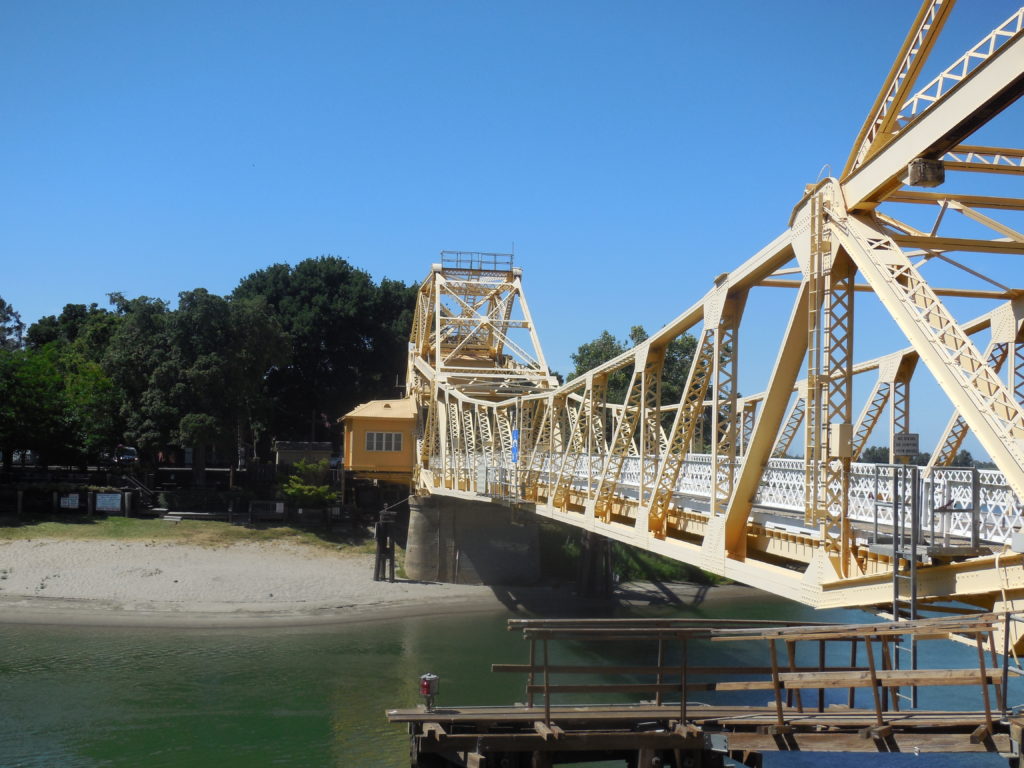
A moldering boat called “the Wet Dream” is hoisted from the tide. Fixed on a barge, the crane’s latticed boom moves the vessel through the air, the overcrowded bay almost lurching into the waves as the weight shifts. Sean Alexander stares from under a weathered Outback hat. His salvage crew pulls nearly 40 of these ghost boats from the Delta each year.
“People just cut them loose and abandon them,” Alexander mutters as the relic’s lowered toward a trailer on the south levee. “This one here’s all rotted out. It’ll never float right again.”
The Wet Dream drifted down from Cache Slough and then started sinking along Steamboat Slough. Its corpse was teetering in the current ahead of an intake for Tim Neuharth’s pear orchards. If the ghost boat collided with that equipment, it could have disrupted irrigation to Neuharth’s crops, which cover 300 acres of Sutter Island. Neuharth’s relieved the salvage team is heaving it out—it’s one threat to his farm taken care of. But the real threat never seems to go away. Neuharth’s convinced the twin tunnels will end a tradition that’s defined his family for five generations.
When the lifelong farmer wants to discuss the tunnels, he invites people to Steamboat Landing, a beach shaded by draping oaks and a sun-colored iron bridge created by the designer of the Golden Gate. The landing has been in Neuharth’s family since 1848. He knows the names of the grand paddle ships that haunt its vanished docks: the Modoc; the Cotton Palace; the Pride of the River; the Delta King. Neuharth’s family sold supplies to their captains and planted long fields of pears, cherries and saffron. Their crops were loaded onto barges and muscled by tug boat to San Francisco.
It’s a community-wide heritage that’s made the area between Hood and Courtland the best pear-producing region in California. Visitors driving along the river can detect that lineage in the tall, empty grain elevators, or Hood’s old packing house that still juts out over the eddies. And there’s a future here, too.
At Courtland’s annual Pear Fair, local children watch their parents serving pear pies, pear ice cream, pear strudel, pear salsa and even hard pear cider. This year, Delta High School senior Lauren Christie was crowned the official Pear Fair Queen. Thousands attend the event to support organic pear-growing in the region.
Neuharth himself still has 125-year-old legacy pear trees living in his orchard. In his view, if the twin tunnels are built, Delta towns themselves will be killed off just as surely as his century-old fruit trees.
“This is the largest inland fresh water estuary in the western hemisphere,” Neuharth observes. “The tunnels are going to turn it into a salt water marsh. Not many things grow in a salt water marsh.”
Nancy Vogel of the California Natural Resources Agency denies the twin tunnels will have that effect. She recently told SN&R the project has “legal safeguards in place” to protect water quality in the North Delta. California officials pushing the tunnels got back-up for that stance in June from the National Marine Fisheries Service and U.S. Fish and Wildlife Service. Both agencies wrote biological opinions indicating the tunnels will not harm the Delta’s sensitive ecosystem.
But Deidre Des Jardins, an independent scientist who studies the Delta, says those proclamations are based on highly suspicious computer modeling. State scientists use conceptual simulations to predict how much fresh water can be diverted from parts of the Delta before the Bay’s salt incursions reach alarming levels. Des Jardins says that, when it comes to the twin tunnels, California officials make it impossible for outside researchers to check their math.
“There is a huge flow of fresh water from the Sacramento River that repels the salt water,” Des Jardins claims. “The state has spent $140 million on computer models to suggest the fish won’t be impacted. It’s just layers upon layers of computer simulations, none of which have any calibration information that they’ll expose. That’s a real red flag for people doing science.”
Recently, as a deluge of new lawsuits were filed against the state over the tunnels, the California Department of Water Resources stopped commenting about its scientific methods around the project.
Farmers in the South Delta, where intakes are already being operated by California officials, say growers like Neuharth have very legitimate fears. In 2009, the South Delta Water Agency filed a legal injunction in court against the State Water Resources Control Board for violating written agreements to keep salt water levels low.
“They keep telling [North Delta farmers] that there are salinity standards for the [twin tunnels],” Des Jardins says. “But the state routinely violates its own salinity standards.”
Neuharth has held those fears since 1981, when Gov. Jerry Brown and southern California utility districts first proposed taking water from the north Delta through a “peripheral canal.” The exported water was, and still is, meant to go primarily to large-scale agriculture operations in some of the state’s most arid valleys. The peripheral canal was soundly crushed in a public vote. But the twin tunnels project is being handled entirely by the legislature and kept away from the California electorate. For Neuharth, that’s what makes the project little more than a political crime.
“That’s a tragedy,” Neuharth says of the process. “The powers that be don’t want it defeated in a statewide vote. … So, what will happen is that billions of agricultural dollars here will go to zero, all the people employed in the region’s industries will go to zero, and then eventually the salt water will damage the ground wells; and when that happens, we’re done living here, too.”
Of Wanderers and Water Dogs
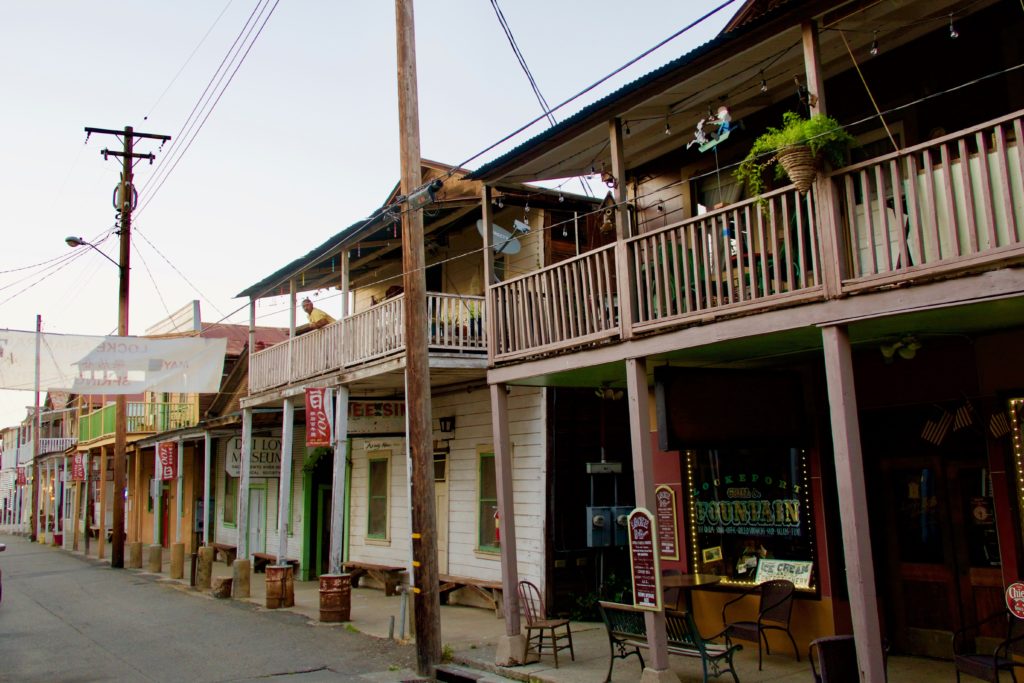
Beer glasses echo on antique wood under the blade of Johnny Cash’s voice: It’s long past noon and the bar’s full again at Al the Wop’s. That’s been the establishment’s name since the 1930s, and it’s still a den of boozy banter, slurred jibes and stealth, riverside partying. Neon glints on a severed buffalo head. Mounted fish and dirty dollar bills hang from its corners. The rickety hall’s dimensions are the only spot on Main Street, Locke, not associated with Chinese history. A sign over the last four stools reads, “Asshole Alley.”
Visitors come to Locke to soak in the Canton memories in its warped balconies and leaning house frames, but many end up in Al the Wop’s, moving bleary eyes across half-strung guitars and pictures of dead sharks on the walls. Photojournalist James Motlow, a resident of Locke for four decades, doesn’t have time for 2 o’clock drinking today. He’s too busy sending emails with updates on the twin tunnels. It was Motlow’s camera that captured the twilight of the Chinese families in Locke. The town was hammered together in 1915 by grandchildren of the Cantonese immigrants who built up the levee walls. By the time Motlow arrived in the 1970s, most of Locke’s post-war generation of Chinese-Americans had moved away, leaving a handful of its elders inhabiting the remnants of fish markets, herb shops, gambling halls, brothels and opium dens. Motlow’s photography preserved their way of life: Mr. Wong Yow wheeling melons through his yard; Mr. Suen Hoon Sum standing on his porch; Mr. Bing Fai Chow holding a fedora in his boarding house.
“Before I got there, they really didn’t like to have their pictures taken by outsiders,” Motlow recalls. “It wasn’t until Jone Ho Leong just stopped one day and let me photograph her face that everything changed.”
As the sun set on the rural Chinese town, a small group of writers and Beat poets moved in to Locke from San Francisco. With them came artisans like cabinet-maker Russell Ooms, who says he never wants to leave. Ooms views Locke as a closeknit amalgam of Latino farm families and odd, bohemian survivors. A collection of town folk often spends hours at dusk chatting in Locke’s back garden.
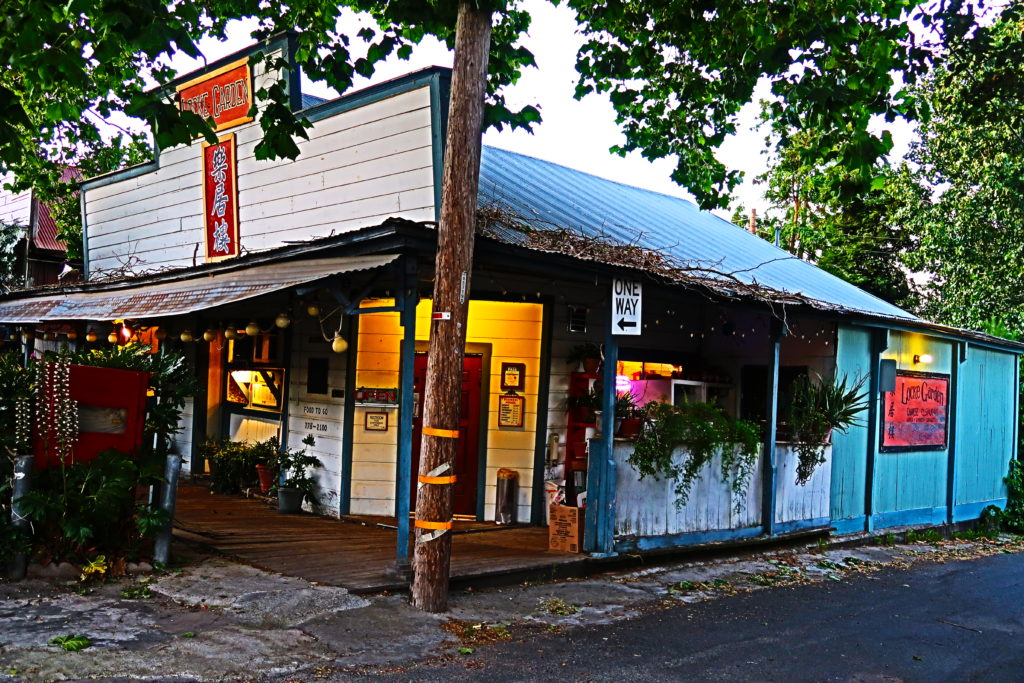
Yet many will have to leave if Locke’s orchards and businesses close.
According to a dense state-sponsored traffic analysis of the twin tunnels project, its creation puts a minimum of 230 additional individual truck trips per day on the Delta’s narrow roads and tight, aging bridges. That is, every day for 14 years. Depending on peak construction time, that number could rise to well over 800 additional truck trips per day. Some reclamation experts estimate the volume even higher. This convoy of big rigs would move up and down a windy 35-mile stretch of road between Freeport and Rio Vista with almost no places to pull over. The owners of the North Delta’s marinas, restaurants, stores, art galleries, wine tasting rooms are sure tourists won’t brave traffic bottlenecks for over a decade to patronize their businesses.
“People think of Main Street Locke as a ghost town, and they don’t know what a thriving community we have,” Ooms stresses. “And people around California have no idea what this tunnel project really is, and what it will do to us.”
Motlow agrees. Even with the current infusion of tourists, he says, Locke’s small business-owners are struggling to make it. Gridlock could be a death knell.
“We’re isolated here and we’ll become more isolated,” Motlow says. “Property values will collapse.”
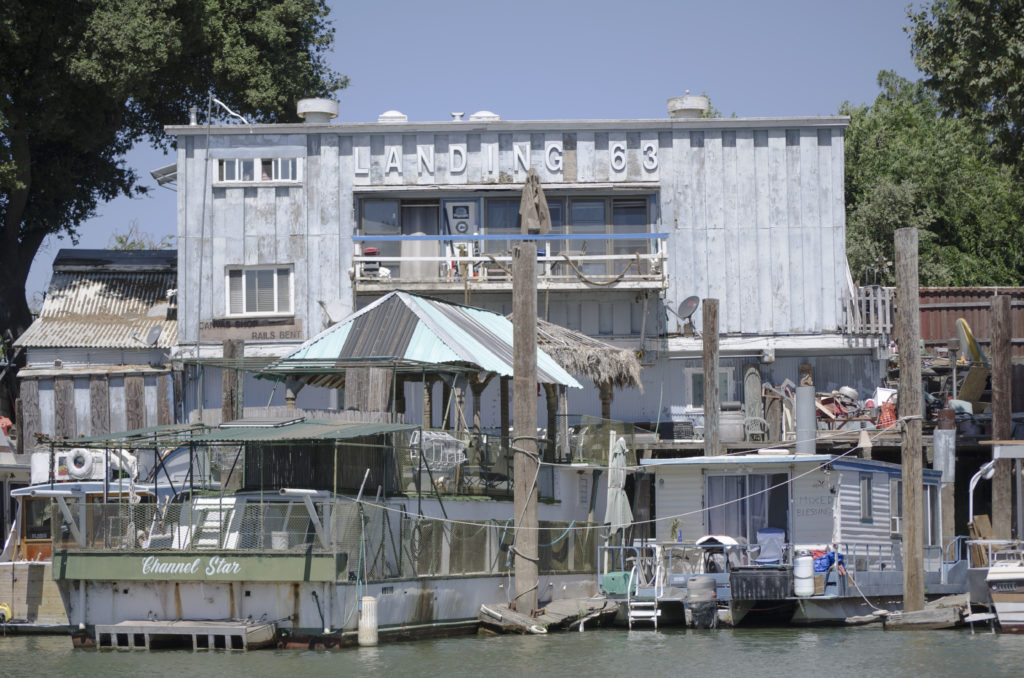
A few miles from Locke, the bar at Giusti’s is crowded with farmers drinking wine with their backs to a dormant juke box. The slough-side hub has stood on one of Walnut Grove’s rear levees since 1912. Outside, a houseboat painted as an Oakland Raiders tribute floats along the dock. Inside, the tavern remains a menagerie of checkered shirts and thin reading glasses—a line of men hunched under the low ceiling plastered in upside-down trucker caps. A decal on the mirror ponders, “What in heck is a Portuguese Water Dog?” Here, that word is pronounced “Portuguese” after one drink and “Portagee” after three. Either term is a reference to another cultural force in the North Delta, a set of third and fourth generation families who have tilled the land for a century. Every year a striking pageantry passed down with these bloodlines is on display at the Delta’s Portuguese Festival. Teens in Iberian riding costumes and regal European gowns march down South River Road, from St. Joseph’s Cathedral to the Portuguese Hall on Lisbon Island. The spectacle has passersby blinking to make sure they’re not in Porto or the Azores.
It was water that brought the Portuguese to towns like Walnut Grove. Many arrived with nothing and built their farms up through sheer white-knuckle determination. That was true of Steve Mello’s grandparents, all four of whom struggled to survive after arriving from Iberia. And yet, today, Mello’s family grows corn, barley, grain and alfalfa on more than 2,000 acres. Like some of his neighbors, Mello is recognized as a leader in wildlife friendly farming techniques. He’s also a community figure who’s been trying to spread the word about the devastating magnitude of the twin tunnels’ construction. Mello says that an endless cavalcade of diesel trucks on the pinched roads will paralyze all farmers’ ability to ship the local harvest.
“We already have farming equipment moving up and down these roads in very dangerous conditions,” Mello notes. “It’s going to be extremely hard to move our crops out.”
According to the California Central Flood Association, the tunnels project’s nonstop wear and tear on roadways also raises an over-arching safety concern.
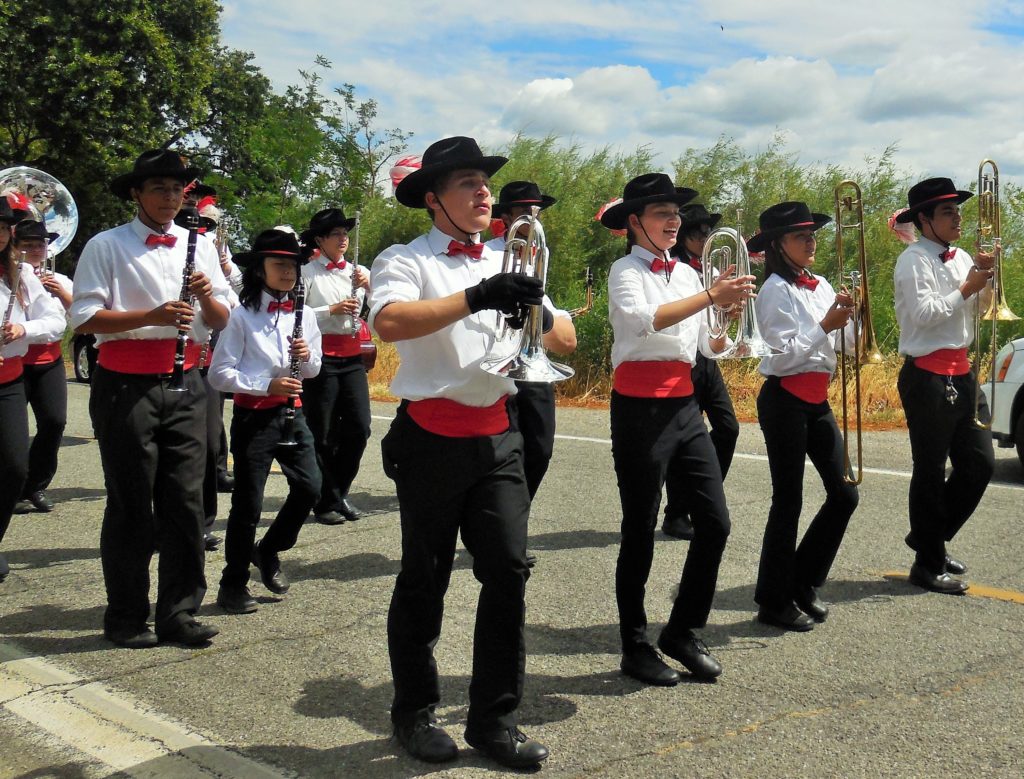
“The EIR didn’t analyze what’s under the pavement those trucks will be driving on,” says Melinda Terry, a spokeswoman for CCFA. “What’s under them is a levee. They don’t have any mitigation in the plan to repair those levees every year as they’re degraded.”
For the people of Locke and Walnut Grove, roaring truck engines and vibrating old bridges aren’t the only sonic impact. They are just as fearful about the noises that might end. Most evenings in the North Delta are alive with a choir of ducks, swan and geese calling from sloughs and ditches. The Delta is in the heart of the Pacific Flyway; ducks and geese don’t nest in salt water.
Mello, recently honored as conservation farmer of the year by the Lodi Sand Hill Crane Association, sees the bird impacts of the tunnels as more proof of an underlining hypocrisy in the state of California’s environmental values.
“Is it reasonable to sacrifice the waterfowl and migratory birds, which we’ve sworn to protect in an international treaty with Canada and Mexico, and is it reasonable to let so much farm acreage go fallow even as we kill our own fisheries, just to grow more almonds in Southern California for billion-dollar farm operators?” Mello challenges. “This is about irrigating a desert that never should have been put into farm production in the first place.”
Looking Homeward
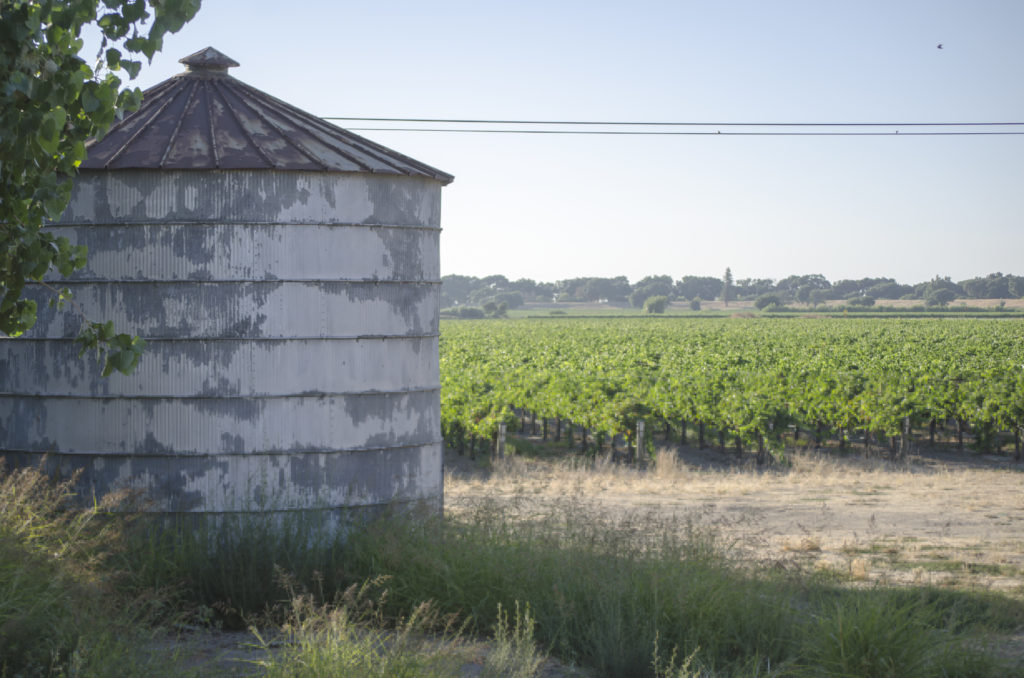
A door creaks open, pulling rays through webs and shadows, illuminating shodo brush strokes on a forgotten scroll. Mark Wilson and Mark Pruner wander into the shell of Holland Union Gakuen, an abandoned Japanese Language School erected in 1927. The building stands on the outskirts of Clarksburg, half-wrapped in oak branches, concealed by wild grape and beehives beneath a vine-tangled levee. Wilson was born and raised nearby, and though he’s not Japanese, he had taken classes in this room as a kid with friends who were Nisei—second-generation Japanese-Americans.
That was after the children returned home from being forced into an internment camp.
Of all the North Delta’s towns, Clarksburg is the best known and most visited. That’s thanks to pioneering grape farmers like Wilson and Warren Bogle, who proved vineyards fed by river wind could yield some of the best Chenin Blanc in the world. The Clarksburg wine appellation now draws tens of thousands of visitors each year. They come to drink vino inside rustic barns and century-old factory husks. They stay to be mesmerized by cottonwood and black walnut branches swaying silently over the waterways.
Wilson is proud of the riverside oasis Clarksburg’s become, but he knows the real story of the town—the story of Clarksburg during World War II—is more intriguing and heart-rending than anything strangers would guess: Clarksburg was the site of two German prisoner of war camps, as well as a place where longtime Japanese-American families were made prisoners by their own country. Clarksburg encapsulates a past that should never be forgotten, though as far as Wilson and Pruner are concerned, it’s a legacy that could be destroyed in the near future. The town is slated to be on the edge of the most disruptive construction in the entire California Waterfix project.
“There aren’t many places like this,” Wilson says. “I think the powers behind [the tunnels] never realized how hard we’d be willing to fight for it.”
Wilson’s grandparents moved to Clarksburg in 1922, sugar beet growers who lived in a foundationless shack that could be hauled by horses to different fields. Over the decades, the Wilson homestead grew and the family prospered. Japanese farmers were also making a life in the area. Back then, Clarksburg had the only public schools in the Delta that were integrated. The comradery between the kids led the Japanese elders to open the Holland Union Gakuen, ensuring their children wouldn’t lose sight of their language and heritage. Eventually nearly half of the students at Clarksburg’s high school were Japanese-Americans.
The attack on Pearl Harbor changed everything. On June 8,1942,Clarksburg held its high school graduation. Half the students were in the bleachers. The other half—the Japanese-American half—were at that moment loading onto trucks bound for Freeport, where a train would take them to Tule Lake, one of 10 internment camps that Americans of Japanese descent were forced into after the outbreak of the war. Wilson was young, but knows that some of Clarksburg’s families did their best to watch over the property of their imprisoned friends.
“There were some farmers who did whatever they could for their neighbors,”
Wilson says. “There were others who just showed up to buy all their belongings for next to nothing. We weren’t all angels; but there were people who tried to help.”
Not long after the Japanese-Americans were emptied from Clarksburg, its outer fields were filled with German war prisoners who’d been captured by Allied forces during the fighting in North Africa. One of Clarksburg’s camps was put under the supervision of U.S. Air Force Major Lester Heringer, who kept the POWs on his family farm nestled along a shady tunnel of grand oak trees. Heringer’s sons, Duke and Stephen, went on to become two of Clarksburg’s defining wine producers.
Today, the only sound in Clarksburg’s marina at dusk is the rustling of magnolias and beating of the stars and stripes over idle sail masts. It’s quiet enough to meditate—quiet enough to contemplate an entangled history of cultural encounters.
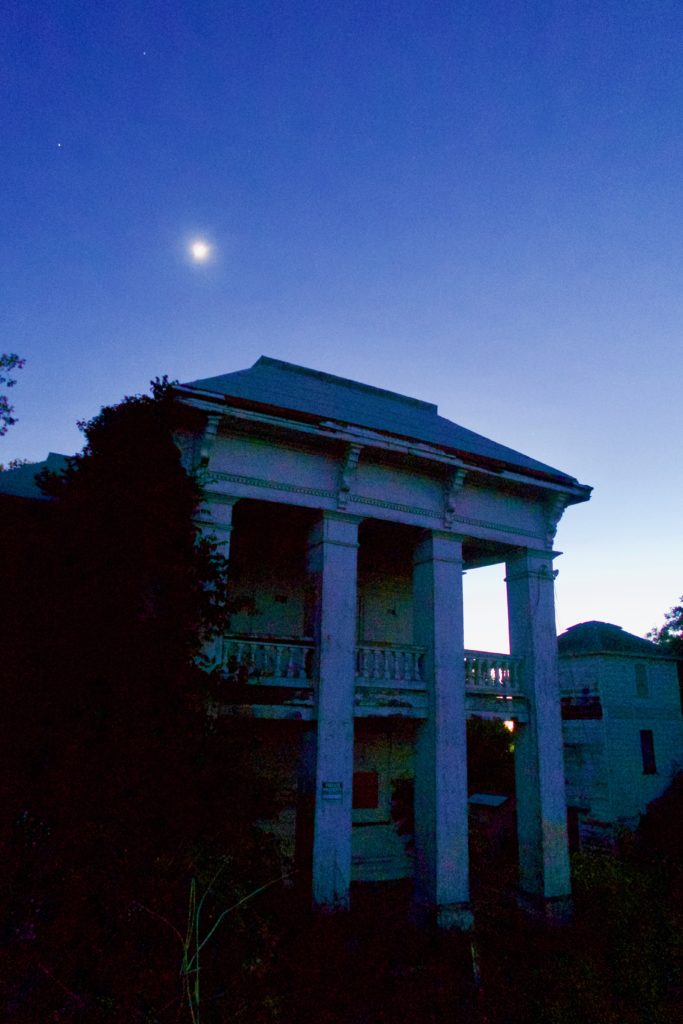
But the calm views, the serene stillness, may not last.
The first of the tunnels’ enormous intakes—with its surge towers, concrete plant, fuel station and long steel and concrete screens—is slated to be built almost directly across the river from Clarksburg. The state’s EIR clearly indicates that, during the 14 years of construction, the site will ring with as much as 42,000 individual pile-strikes a day. That’s true of the intakes being built next to Hood and north of Courtland. Additionally, the EIR predicts the large-scale destruction of native trees and historic buildings, the breaking apart and reforming of levee roadways and the digging of “de-welling” sites within the ground water aquifer. The EIR also outlines widespread sound, dust and seismic activity near the town for years on end. For Clarksburg residents, this won’t look much different than the war zone the German prisoners once arrived from. Leaders at the California Central Flood Association agree with Wilson and Pruner that the project will result in the abandonment of dozens of homes and properties.
“We’ve got to educate people on the Delta and all the magical history that will be lost,” says Barbara Daly, a Clarksburg librarian who’s been inviting outsiders to see the river and sloughs up close. “It’s a history people just don’t know about.”
Wilson and a coalition of Delta farmers recently filed a lawsuit against the state over the tunnels. The leaders of Sacramento and Yolo counties just joined other local governments in a separate legal action. Numerous environmental groups are also suing. And yet legal experts warn that none of these filings will necessarily stop the project—or save the rare rhythms of life that exist from Clarksburg to Walnut Grove.
“If it happens, this place will never be the same,” Wilson says. “To me, it’s like the history of the West replaying itself. It’s manifest destiny; and today we look back and say that same process created a lot of wealth, but it caused untold damage.”

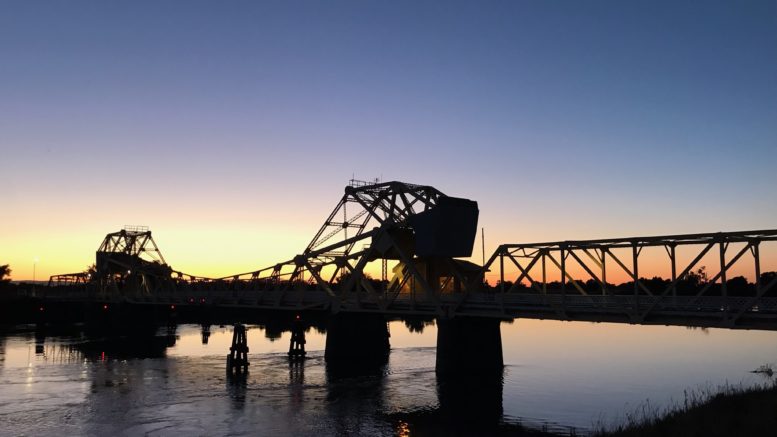
Be the first to comment on "Requiem for the Delta"